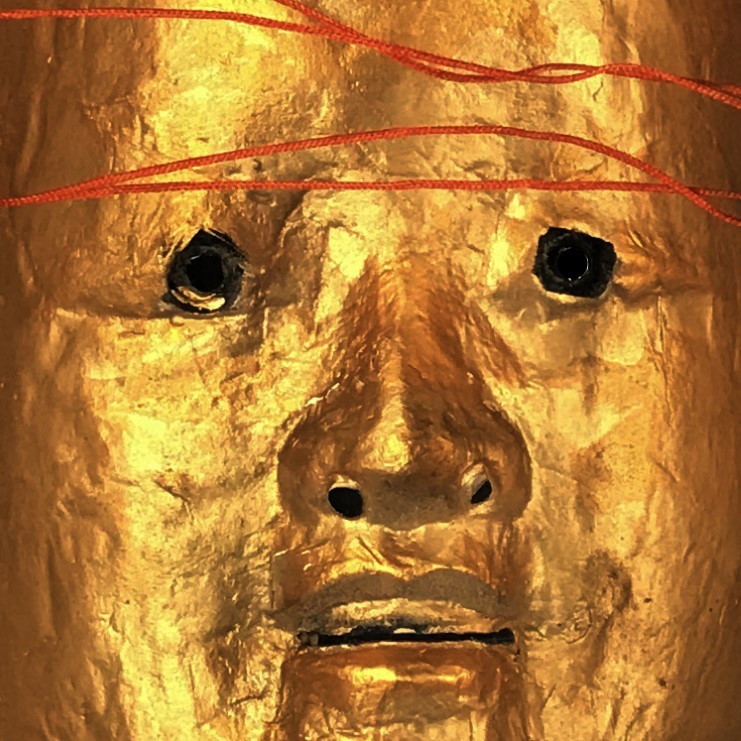Materials
It is worth noting that Nō masks are traditionally carved from a block of Hinoki (檜 Japanese cypress), then painted with several layers of a gesso-like substance made from Gofun (胡粉 chalk/crushed shells) and Nikawa (膠 animal glue). Features such as eyebrows, lips, and rosy cheeks are then painted using natural mineral pigments. The back of the mask is usually coated with Urushi (漆 laquer), in order to protect the wood against the actor's persperation.
However, this is not the case with the two examples presented in the exhibit, both of which are made using Hariko (張り子 papier-mâché). The masks appear to have been made from sheets of glue-soaked paper, which were then pressed into a mold; in much the same way that Venetian Carnivale masks are made.
As can be seen in the first image, the dry masks were then coated with gesso, into which shallow details such a wrinkles have been finely carved. As illustrated by the second image, the backs of the masks have not been laquered, but painted (this may be due to newspaper having been used).
The reason for which these Nō masks have not been made in the traditional method is either that they were only meant for small-scale amateur productions (such as this example https://tatami-antiques.com/items/paper-mache-kuwae-mask/), or that they were not intened to be used on stage at all.
These masks could in fact have been made as good luck charms, and might have been sold at Shinden (神殿 Shinto temples) or at traditional japanese Matsuri (祭 festivals). One such example can be seen at https://tatami-antiques.com/items/sagamen-koomote/.


